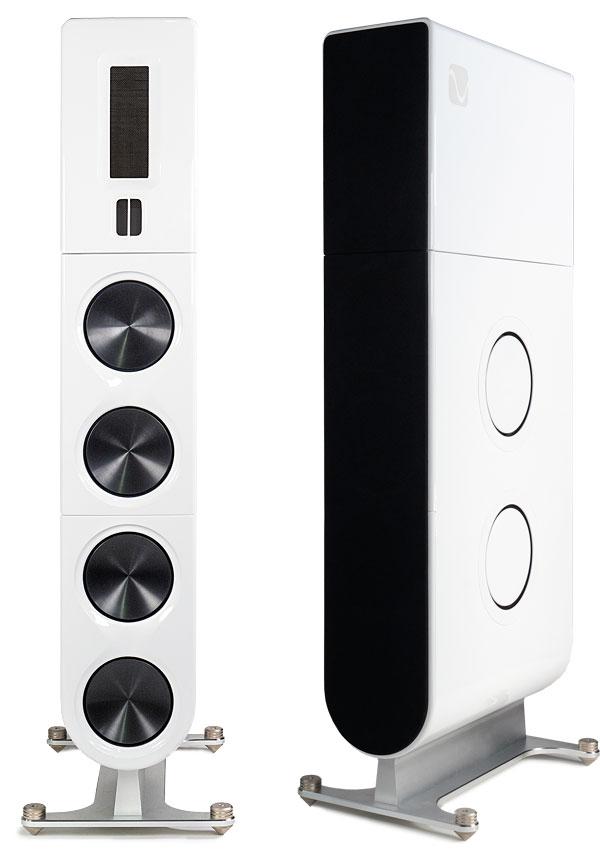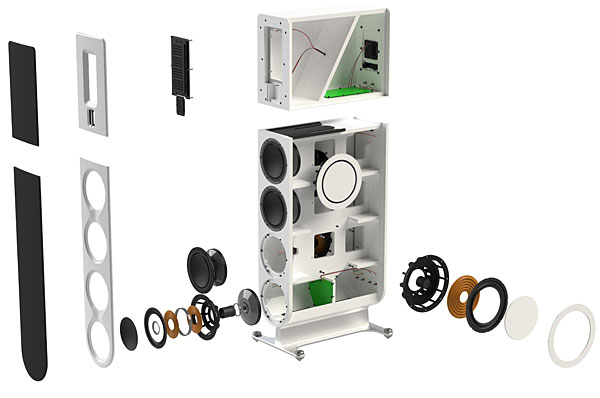PS Audio aspen FR30 Loudspeaker

 Inspired by 1980s behemoths, PS Audio's inaugural loudspeakers have a sound to match their striking looks
Inspired by 1980s behemoths, PS Audio's inaugural loudspeakers have a sound to match their striking looks
At a time when every new high-end product seems to come with an extensive backstory, the legend behind the 'aspen' FR30, the first speakers from Colorado-based PS Audio, still takes some beating. The £28,000-a-pair floorstanders have, we're told, been '50 years in the making', which places their beginnings just before that of the company itself, started by Paul McGowan and Stan Warren in 1973. In between times, McGowan left, worked with Arnie Nudell of Infinity Systems and then bought back the PS Audio name in the late 1990s, becoming its CEO. So we can safely assume that what is now realised as the aspen FR30 has been in the works for all that time.
Though the Infinity Systems speakers – all four enclosures of them – have certainly been influential in PS Audio's own project, what we've ended up with couldn't be much further removed. The aspen FR30 may be big, at almost 1.54m tall including their bases, and heavy – 104.5kg each – but they're relatively slender and hardly dominate a room as would a pair of the 2.3m tall IRSs complete with their bass towers. Available in the Pearl White of the review pair or Sable Black, both finished in 20 layers of hand-rubbed lacquer, they're also sensibly priced, at least in high-end hi-fi terms. Sure enough, £28k is well into 'new car' territory, but there's no shortage of ways to spend considerably more on a pair of speakers, as we report in these pages on a regular basis.
The Hang Of It
The aspen FR30 is very much a speaker of two parts – quite literally, with both parts fitting together using a custom-machined sliding mount that also allows some adjustment between the two if required. The upper section contains the midrange and treble sections, in a sealed cabinet, while the lower part, mounted on its own slender stand, houses the bass, using no fewer than four drivers and a quartet of side-firing auxiliary bass radiators (ABRs) for each channel. The cabinet's rounded shape to the base, and the way it almost seems to hang in air on the single support of the stand, serves to make the whole enterprise look even slimmer, although the enclosure is actually less than 26cm wide – just enough to accommodate the 20cm bass units – and the whole footprint, including the stand, is just 40x65cm. Deep, but hardly huge, then, although the speakers do have a suitably commanding in-room presence.

Sacred Space
Everything here has been custom-designed for this speaker, the treble drivers – yes, there are two, with one to the rear to control the 'space' in the sound – and midrange unit using planar magnetic technology said by the designers to give 'the speed of an electrostatic with the dynamics of a cone'. Using ultra-light Teonex diaphragms driven by neodymium motors in a push-pull configuration, the 64mm treble unit and the 255mm midrange above it are designed to drive air with minimal coloration, the midrange working from 400Hz up to 2.5kHz before handing over to the tweeters.
The rear 'Near/Far' facility adjusts the response at the baffle step. PS Audio offers this correction if the loudspeaker sounds too thick or full when its deep cabinet is placed near a rear wall. Lifting the mid/treble response corrects the boundary bass boost back to 'flat'. However, PS Audio strongly recommends the speaker be used away from boundaries and in its 'Far' configuration as a general rule.
The bass units, meanwhile, are long-throw drivers, their 200mm aluminium diaphragms being built into cast alloy chassis and driven by massive motors weighing almost 5.5kg, all designed to match the speed and transparency of the planar magnetic drivers up above them.
Double Talk
The diaphragms are suspended on a double spider for control, while the motor uses a split magnetic gap and double Faraday ring to control inductance and enhance bandwidth. PS Audio has avoided the obvious solution of porting the cabinet to augment its bass, and instead uses that quartet of passive radiators, two on each side of the enclosure. Coloured white or black to match the chosen cabinet finish, the flat surface of the ABRs has a decidedly 'biscuit-tin clunk' when rapped with the knuckles, even though we'll discover that these suspended discs seem to work rather well when in action.
The enclosure itself uses MDF for the main body, with thermoset fibreglass resin composite employed in the front baffle. The latter has integrated waveguides for the high-frequency drivers, while the base is aluminium with milled brass spikes and optional plastic feet for hard surfaces. Extensive internal bracing is used to stiffen the enclosure and 'compartmentalise' the internal volume, as you can see in the exploded view. Finally, the crossover in the speakers is a two-part design, with separate mid/tweeter and woofer networks.
























































